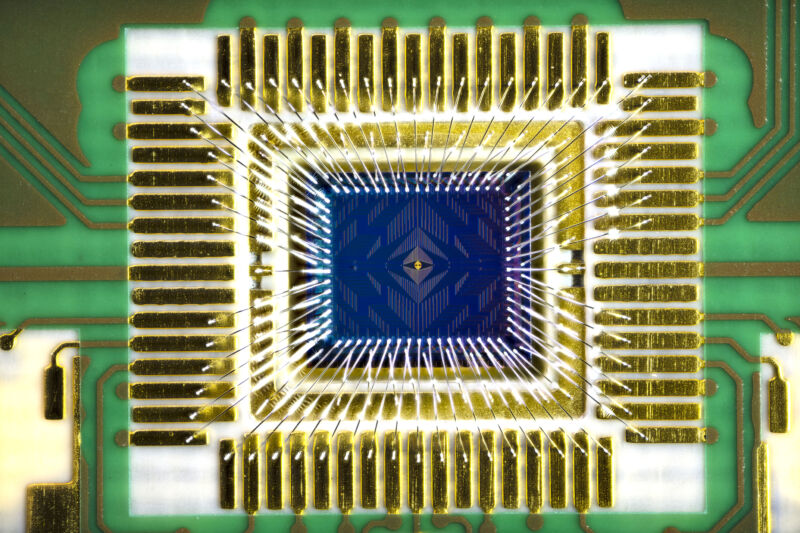Intel To Start Shipping A Quantum Processor

Intel does a lot of things, but it’s mostly noted for making and shipping a lot of processors, many of which have been named after bodies of water. So, saying that the company is set to start sending out a processor called Tunnel Falls would seem unsurprising if it weren’t for some key details. Among them: The processor’s functional units are qubits, and you shouldn’t expect to be able to pick one up on New Egg. Ever.
Tunnel Falls appears to be named after a waterfall near Intel’s Oregon facility, where the company’s quantum research team does much of its work. It’s a 12-qubit chip, which places it well behind the qubit count of many of Intel’s competitors—all of which are making processors available via cloud services. But Jim Clarke, who heads Intel’s quantum efforts, said these differences were due to the company’s distinct approach to developing quantum computers.
Intel being Intel
So far, both the large companies and startups that are developing quantum computers have been focused on a single technology (transmons, trapped ions, etc.) that they’re betting they can be the first to scale to useful qubit counts and error rates. To the extent that they have customers, those customers are simply developing the expertise needed to use the processors should they ever become viable. That can easily be achieved by accessing the hardware via a cloud service and using a software developer’s kit instead of directly controlling the hardware. So, that’s what nearly everyone other than Intel has been focused on providing.
Intel, by contrast, is attempting to build silicon-based qubits that can benefit from the developments that most of the rest of the company is working on. The company hopes to “ride the coattails of what the CMOS industry has been doing for years,” Clarke said in a call with the press and analysts. The goal, according to Clarke, is to make sure the answer to “what do we have to change from our silicon chip in order to make it?” is “as little as possible.”
The qubits are based on quantum dots, structures that are smaller than the wavelength of an electron in the material. Quantum dots can be used to trap individual electrons, and the properties of the electron can then be addressed to store quantum information. Intel uses its fabrication expertise to craft the quantum dot and create all the neighboring features needed to set and read its state and perform manipulations.
However, Clarke said there are different ways of encoding a qubit in a quantum dot (Loss-DiVincenzo, singlet-triplet, and exchange-only, for those curious). This gets at another key difference with Intel’s efforts: While most of its competitors are focused solely on fostering a software developer community, Intel is simultaneously trying to develop a community that will help it improve its hardware. (For software developers, the company also released a software developer kit.)
To help get this community going, Intel will send Tunnel Falls processors out to a few universities: The Universities of Maryland, Rochester, Wisconsin, and Sandia National Lab will be the first to receive the new chip, and the company is interested in signing up others. The hope is that researchers at these sites will help Intel characterize sources of error and which forms of qubits provide the best performance.
READ MORE HERE

